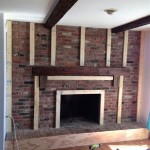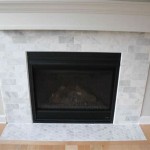How Much Are Gas Fireplace Inserts? A Comprehensive Guide to Cost Factors
Gas fireplace inserts offer a convenient and efficient way to upgrade an existing masonry fireplace or a prefabricated firebox. They provide the aesthetic appeal of a traditional fire without the hassle of wood burning, offering zone heating capabilities and improved energy efficiency. However, understanding the associated costs is crucial before making a purchase. The final price of a gas fireplace insert can vary significantly based on several factors, which this article will explore in detail.
Factors Influencing the Price of Gas Fireplace Inserts
The cost of a gas fireplace insert is not a fixed number. Multiple elements contribute to the overall price, including the insert's size, features, brand reputation, installation complexity, and regional variations. A thorough understanding of these aspects will empower consumers to make informed decisions aligned with their budget and heating requirements.
Insert Size and Heating Capacity: A primary determinant of cost is the size and heating capacity of the insert, measured in British Thermal Units (BTUs). Larger inserts with greater BTU output are generally more expensive because they can heat larger spaces. Consider the square footage of the area intended to be heated when selecting an insert. An oversized insert for a small room will be inefficient and costly to operate, while an undersized insert will struggle to provide adequate warmth. Manufacturers typically provide BTU ranges and recommended square footage coverage for their models. Evaluate your heating needs realistically to avoid unnecessary expenses. Factors such as insulation levels, ceiling height, and climate conditions also impact the required heating capacity.
Features and Aesthetics: The features and aesthetic design of gas fireplace inserts profoundly affect their price. Models with advanced features like remote controls, programmable thermostats, variable flame height adjustments, and integrated blowers command higher prices. Aesthetic options, such as realistic log sets, decorative fire glass, and different firebox liners (brick, porcelain, or metal), also contribute to the overall cost. While these features enhance user experience and visual appeal, they are not always essential for heating performance. Decide which features are genuinely important and align with your budget before committing to a purchase. For example, a blower can significantly improve heat distribution, while decorative options are primarily aesthetic considerations.
Brand Reputation and Quality: Established brands with a reputation for quality and reliability often charge higher prices than lesser-known manufacturers. This premium reflects the brand's investment in research and development, manufacturing standards, and customer support. While a higher price tag does not always guarantee superior quality, reputable brands generally offer better warranties, more durable components, and a higher likelihood of long-term performance. Research different brands, read customer reviews, and compare warranties before making a decision. Consider the long-term cost of ownership, including potential repair costs and replacement frequency, when evaluating the value of a particular brand.
Type of Venting System: Gas fireplace inserts require a venting system to safely exhaust combustion gases. The type of venting system required can significantly impact the overall installation cost. There are two primary types of venting systems: direct vent and B-vent. Direct vent systems draw air from outside for combustion and exhaust gases directly outside through a sealed system, making them safer and more efficient. However, direct vent systems are generally more expensive to install than B-vent systems. B-vent systems utilize the existing chimney for venting, but they require proper sizing and inspection to ensure safe and efficient operation. The choice between direct vent and B-vent depends on the existing fireplace configuration, building codes, and personal preference. Consult with a qualified installer to determine the most suitable and cost-effective venting solution for your home.
Installation Complexity and Labor Costs: Installation costs can vary considerably depending on the complexity of the installation and the prevailing labor rates in your area. Simple installations, such as replacing an existing gas insert with a similar model, will typically be less expensive than complex installations that require modifications to the existing fireplace or venting system. Factors that can increase installation costs include the need for gas line extensions, chimney flue relining, framing modifications, and electrical work. Obtain multiple quotes from qualified installers to compare pricing and ensure that the quotes include all necessary work. Verify that the installers are licensed and insured, and that they have experience installing gas fireplace inserts. It is also important to inquire about any potential hidden costs or contingencies that may arise during the installation process.
Regional Price Variations: The cost of gas fireplace inserts can vary significantly based on geographic location. Factors such as local building codes, labor rates, material costs, and market competition can influence the final price. Areas with stricter building codes or higher labor costs will generally have higher installation expenses. Similarly, areas with limited competition among retailers and installers may see higher prices for both the insert and the installation services. Research local retailers and installers to get an accurate understanding of the prevailing prices in your area. Consider obtaining quotes from multiple sources to ensure that you are receiving a competitive price. Online retailers can also offer competitive pricing, but it is important to factor in shipping costs and installation expenses when comparing prices.
Typical Cost Breakdown of Gas Fireplace Inserts
To provide a clearer understanding of the overall cost of a gas fireplace insert, it is essential to examine a typical cost breakdown. This breakdown includes the cost of the insert itself, installation costs, and any additional expenses associated with the project. Keep in mind that these are general estimates, and the actual costs may vary depending on the specific factors outlined above.
Cost of the Gas Fireplace Insert: The price of a gas fireplace insert can range from approximately $2,000 to $6,000 or more, depending on the size, features, brand, and venting requirements. Basic models with limited features may cost as little as $2,000, while high-end models with advanced features and elaborate designs can exceed $6,000. Consider the heating capacity, aesthetic preferences, and budget when selecting an insert. Compare prices from different retailers and manufacturers to find the best value for your needs. Look for sales, discounts, and rebates to potentially reduce the overall cost. It is also important to factor in any ongoing maintenance costs, such as annual servicing and cleaning, when evaluating the long-term cost of ownership.
Installation Costs: Installation costs typically range from $500 to $3,000 or more, depending on the complexity of the installation. Simple installations may cost as little as $500, while complex installations requiring extensive modifications to the existing fireplace or venting system can exceed $3,000. Factors that can influence installation costs include the type of venting system required, the need for gas line extensions, chimney flue relining, framing modifications, and electrical work. Obtain multiple quotes from qualified installers to compare pricing and ensure that the quotes include all necessary work. Verify that the installers are licensed and insured, and that they have experience installing gas fireplace inserts. It is also important to inquire about any potential hidden costs or contingencies that may arise during the installation process.
Additional Expenses: In addition to the cost of the insert and installation, there may be other expenses associated with the project. These expenses can include building permits, gas line modifications, electrical work, chimney cleaning, and decorative accessories. Building permits are typically required for gas fireplace insert installations, and the cost can vary depending on local regulations. Gas line modifications may be necessary if the existing gas line is not properly sized or located. Electrical work may be required to connect the insert to a power source for features such as blowers and remote controls. Chimney cleaning is recommended before installing a gas insert to ensure proper venting. Decorative accessories, such as log sets and fire glass, can add to the overall cost. Factor in these additional expenses when budgeting for a gas fireplace insert installation.
Ways to Reduce the Cost of a Gas Fireplace Insert
While the initial investment in a gas fireplace insert can be significant, there are several strategies to potentially reduce the overall cost. Careful planning, research, and negotiation can help consumers save money without compromising on quality or performance.
Shop Around and Compare Prices: Compare prices from multiple retailers and manufacturers to find the best deals. Online retailers can often offer competitive pricing, but be sure to factor in shipping costs and installation expenses. Look for sales, discounts, and rebates to potentially reduce the overall cost. Consider purchasing a floor model or a discontinued model to save money. Negotiate with retailers and installers to see if they are willing to offer a discount. Bundle the purchase of the insert and installation services to potentially receive a lower price. By shopping around and comparing prices, consumers can potentially save hundreds or even thousands of dollars on a gas fireplace insert.
Consider a Less Elaborate Model: Opt for a gas fireplace insert with fewer features and a more basic design. Advanced features, such as remote controls, programmable thermostats, and decorative accessories, can significantly increase the price. If these features are not essential, consider a simpler model with only the necessary functions. Choose a log set or fire glass that is less expensive. Select a firebox liner that is more affordable. By simplifying the design and features, consumers can save money without sacrificing heating performance.
Plan the Installation Carefully: Careful planning can help minimize installation costs. Choose a location that is easily accessible and requires minimal modifications to the existing fireplace or venting system. Consider a direct vent system if it is more cost-effective than relining the chimney for a B-vent system. Prepare the installation site by cleaning the fireplace and removing any obstructions. Obtain all necessary permits and approvals before starting the installation process. By planning the installation carefully, consumers can potentially reduce the overall cost and avoid unexpected expenses.
Consider DIY Installation (with Caution): While DIY installation may seem like a cost-effective option, it is generally not recommended unless you have extensive experience with gas appliance installations. Improper installation can be dangerous and can void the manufacturer's warranty. Gas fireplace inserts require precise connections and adjustments to ensure safe and efficient operation. Incorrect installation can lead to gas leaks, carbon monoxide poisoning, and other hazards. If you are not comfortable with the installation process, it is best to hire a qualified professional. However, if you are experienced and knowledgeable, you may be able to save money by performing some of the preparatory work yourself, such as cleaning the fireplace and removing any obstructions. Always follow the manufacturer's instructions carefully and obtain all necessary permits before starting the installation process.
Take Advantage of Rebates and Incentives: Check with your local utility company and government agencies for rebates and incentives on energy-efficient gas fireplace inserts. Many utility companies offer rebates for installing high-efficiency heating appliances, while some government agencies offer tax credits or other incentives. These rebates and incentives can significantly reduce the overall cost of the insert. Research available programs and apply for any applicable rebates or incentives before making a purchase. Be sure to meet all eligibility requirements and follow the application instructions carefully.

Gas Fireplace Insert Cost Forbes Home

Estimated Page Fireplaces Stoves Inserts Wood Gas Pellet

Napoleon Gas Fireplace Inserts Patio Palace

Gas Fireplace Inserts At Com

Gas Fireplace Inserts Fireplacesdirect Com

Gas Fireplace Insert Propane Regency Vermont Castings Napoleon

Belmont Small Gas Insert

30 Ruby Contemporary Intellifire Touch Direct Vent Fireplace Insert Blower And Remote Electronic Ignition Majestic

Gas Fireplace Inserts Napoleon Fireplaces

Enviro E Series Gas Or Propane Insert Fireplace Fireplaces By Cameron
Related Posts








